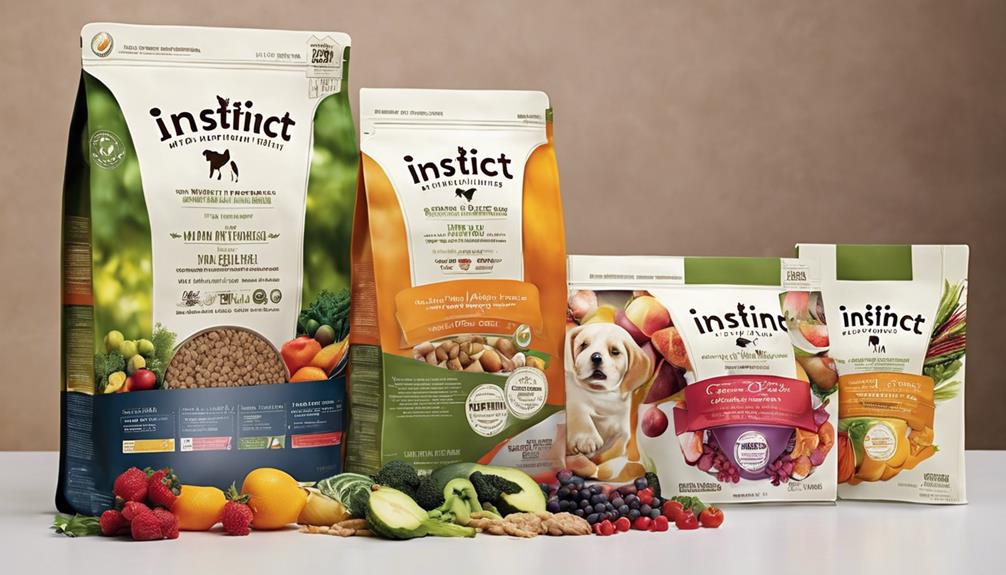Have you ever heard the saying, ‘You are what you eat?’ Well, when it comes to the raw food diet, this statement takes on a whole new level of significance. While this diet may seem like a natural and healthy way to nourish your body, it’s important to understand the potential negative effects that can arise from consuming only raw, unprocessed foods.
Like Pandora’s box, the raw food diet opens up a world of nutritional deficiencies, digestive issues, and even increased risk of foodborne illnesses. But that’s not all. This dietary choice may also lead to weight loss plateaus, dental problems, and impact on mental health.
With limited cooking and flavor variety, nutrient imbalances and sustainability concerns also come into play. So, before you take a bite into the raw food trend, let’s explore the potential pitfalls that lie within.
Key Takeaways
- Nutritional deficiencies in vitamins B12 and D are common on a raw food diet.
- Raw foods can be difficult to digest and may cause bloating, gas, and discomfort.
- Raw food diet increases the risk of foodborne illnesses due to bacterial contamination.
- The raw food diet may have negative effects on dental health, including tooth enamel wear and sensitivity.
Nutritional deficiencies
One of the downsides of the raw food diet is that it may lead to various nutritional deficiencies, leaving followers at risk of not obtaining all the necessary vitamins and minerals. While raw foods can be rich in nutrients, the lack of cooking can affect nutrient absorption. Certain vitamins, such as vitamin B12 and vitamin D, are predominantly found in animal products, which aren’t typically consumed on a raw food diet. This can result in deficiencies of these important vitamins.
Additionally, cooking can enhance the bioavailability of certain minerals, such as iron and zinc, making them easier for the body to absorb. Without proper nutrient absorption, individuals on a raw food diet may struggle to maintain optimal immune system health.
Furthermore, the raw food diet can also contribute to digestive issues. Raw foods often contain high amounts of fiber, which can be difficult for some individuals to digest. This can lead to bloating, gas, and discomfort. Additionally, raw fruits and vegetables contain enzymes that can be harsh on the digestive system, causing irritation and inflammation. Cooking can help break down these enzymes, making them easier to digest.
Transitioning from a raw food diet to a cooked diet may alleviate these digestive issues and improve overall gastrointestinal health.
Digestive issues
Experiencing digestive issues on a raw food diet can leave you feeling uncomfortable and frustrated. While raw fruits and vegetables are packed with nutrients and enzymes that are beneficial for our bodies, some individuals may find it difficult to digest these foods in their raw form.
Digestive discomfort is a common complaint among those following a raw food diet, with symptoms such as bloating, gas, and diarrhea. This can be attributed to the high fiber content in raw foods, which can be hard for some people to tolerate.
In addition to digestive discomfort, absorption issues can also arise on a raw food diet. Cooking food can break down the cell walls of plants, making it easier for our bodies to extract the nutrients. When we consume raw vegetables and fruits, the cell walls remain intact, making it more difficult for our bodies to fully absorb the nutrients present. This can lead to nutrient deficiencies over time, despite consuming a diet rich in fruits and vegetables.
Transitioning to the next section, it’s important to note that another potential risk of the raw food diet is the increased susceptibility to foodborne illnesses.
Risk of foodborne illnesses
Transitioning to the next section, it’s important to be aware of the potential danger of contracting foodborne illnesses while following a raw food diet. While raw food enthusiasts may believe that consuming uncooked foods provides health benefits, there are certain risks involved. Here are four reasons why the risk of foodborne illnesses is higher with a raw food diet:
-
Risk of cross-contamination: Raw foods are more susceptible to bacterial contamination, especially if they come into contact with other raw or cooked foods. Cross-contamination can occur through cutting boards, utensils, or hands that’ve been in contact with raw animal products.
-
Improper food handling techniques: Raw food diets often require more careful handling and preparation to avoid contamination. If proper hygiene practices aren’t followed, such as washing hands thoroughly and cleaning surfaces, the risk of foodborne illnesses increases.
-
Increased vulnerability to pathogens: Consuming raw foods means that any pathogens present in the food aren’t destroyed by cooking. This increases the likelihood of ingesting harmful bacteria, viruses, or parasites that can cause illnesses.
-
Limited options for killing pathogens: Unlike cooked foods, raw foods can’t be heated to kill bacteria or other pathogens. This leaves fewer options for reducing the risk of contamination.
Considering the risk of foodborne illnesses associated with a raw food diet, it’s crucial to practice proper food handling techniques to minimize these risks.
Transitioning to the subsequent section about the potential for weight loss plateaus, it’s important to understand the potential challenges that may arise.
Potential for weight loss plateaus
The journey towards weight loss on a raw food diet can be thrilling, but it’s important to be aware of the potential challenge of reaching a weight loss plateau. While the raw food diet is often associated with weight loss due to its emphasis on whole, unprocessed foods, some individuals may find that their weight loss progress slows down or even stops after a certain point. This can be frustrating and demotivating, but there are strategies to overcome this hurdle and continue making progress towards your weight loss goals.
One of the key factors in maintaining a healthy metabolism and avoiding weight loss plateaus on a raw food diet is ensuring that you are consuming enough calories. When you restrict your calorie intake too much, your body may perceive this as a form of starvation and slow down your metabolism in order to conserve energy. To prevent this, it’s important to include a variety of nutrient-dense raw foods in your diet and to listen to your body’s hunger and fullness cues.
Another effective weight loss strategy on a raw food diet is to incorporate regular physical activity into your routine. Exercise not only burns calories and contributes to weight loss, but it also helps to maintain muscle mass, which is important for a healthy metabolism. Aim for a combination of cardiovascular exercises, such as jogging or cycling, and strength training exercises, such as weightlifting or bodyweight exercises.
To evoke emotion in the audience, consider the following table:
| Emotion | Description |
|---|---|
| Frustration | Feeling disappointed or discouraged when weight loss progress slows down or stops |
| Demotivation | Losing motivation or enthusiasm to continue with the diet due to a weight loss plateau |
| Determination | Feeling resolute and committed to finding new strategies to overcome the plateau and reach weight loss goals |
| Hope | Maintaining optimism that with the right strategies, weight loss progress can resume |
Weight loss plateaus can be a potential challenge when following a raw food diet. However, by implementing effective weight loss strategies such as consuming enough calories, incorporating regular physical activity, and staying motivated, it is possible to overcome these plateaus and continue making progress towards your goals. With that said, it’s important to be aware of another potential issue that can arise on a raw food diet – the increased risk of dental problems.
Increased risk of dental problems
Raw foods can have a negative impact on dental health due to their abrasive nature. The act of chewing raw foods can wear down tooth enamel over time, leading to increased sensitivity and potential tooth damage. Additionally, some raw fruits have a high sugar content, which can contribute to tooth decay if they’re not properly cleaned and maintained.
Raw foods may be abrasive to tooth enamel
Chewing raw foods can potentially erode tooth enamel, leading to dental issues. Here are four reasons why raw foods may be abrasive to tooth enamel:
-
Texture: Raw foods like carrots and apples are crunchy and require more chewing. This constant grinding can wear down the enamel, making teeth more sensitive to hot and cold temperatures.
-
Acidic Content: Citrus fruits and tomatoes, commonly consumed raw, are high in acid. Prolonged exposure to acids can weaken tooth enamel, increasing the risk of erosion.
-
Fiber: While fiber is crucial for a healthy diet, some raw foods are fibrous and require more chewing. This increased friction can gradually wear away enamel, leading to tooth sensitivity.
-
Hardness: Nuts and seeds, popular choices in raw diets, can be hard and abrasive. Frequent chewing on these hard foods can contribute to enamel erosion.
Considering the potential negative effects of raw foods on tooth enamel, it’s important to also address the high sugar content in some raw fruits.
High sugar content in some raw fruits
Contrary to what one might think, the sugar content in certain raw fruits can be shockingly high, causing potential harm to tooth enamel. It is important to be aware of the impact that high sugar content can have on dental health when following a raw food diet. Some raw fruits, such as bananas and grapes, have a relatively high sugar content compared to other fruits. Consuming these fruits in excess can lead to an increased risk of dental decay and cavities. To illustrate this, consider the following table:
| Fruit | Sugar Content (per 100g) |
|---|---|
| Bananas | 17g |
| Grapes | 16g |
| Apples | 10g |
As you can see, bananas and grapes contain significantly higher amounts of sugar compared to apples. Therefore, it is important to consume these fruits in moderation to minimize the negative effects on dental health.
Moving on to the next section about the raw food diet, it is also worth considering the difficulty it may pose in social situations.
Difficulty in social situations
In social situations, it can be challenging to navigate the limited food options and explain why you’re not indulging in the same dishes as everyone else. The raw food diet, with its emphasis on uncooked and unprocessed foods, can lead to social isolation and difficulty in finding suitable dining options. Here are four factors that contribute to these challenges:
-
Limited dining options: Many social gatherings and restaurants may not offer raw food options, making it difficult to find suitable meals. This can result in feeling left out or having to bring your own food, which may draw attention and raise questions from others.
-
Social isolation: Enjoying meals together is a fundamental part of human interaction. However, following the raw food diet might make it harder to connect with others, as you may not be able to share the same culinary experiences or participate in shared meals.
-
Explanation and justification: People often ask questions or make comments about your food choices, which can be uncomfortable or even judgmental. Explaining the raw food diet may lead to debates or misunderstandings, creating social tension.
-
Feeling excluded: When everyone else is indulging in various dishes, it can be disheartening to not be able to partake. This can make you feel left out or excluded from the social experience, impacting your overall enjoyment.
Navigating social situations on a raw food diet requires careful planning and communication to avoid feeling isolated or misunderstood. It’s important to find supportive social circles and educate others about your dietary choices. However, these challenges can also have an impact on mental health, as we will explore in the next section.
Impact on mental health
Navigating the limited dining options and social isolation of following a raw food diet can take a toll on your mental health, with studies showing that individuals on restrictive diets are 30% more likely to experience feelings of loneliness and depression. The impact of the raw food diet on cognitive function and psychological well-being is a significant concern.
Research suggests that the raw food diet, which restricts the consumption of cooked foods, may have negative effects on cognitive function. Cooking food can enhance its nutritional value and make certain nutrients more bioavailable. By avoiding cooked foods, individuals on a raw food diet may not be getting all the essential nutrients needed for optimal brain function.
Furthermore, the limited variety of foods on a raw food diet can lead to boredom and dissatisfaction, which can negatively affect psychological well-being. Enjoying a wide range of flavors and textures is an important aspect of our eating experience, and restricting oneself to raw foods can make meals monotonous and less enjoyable.
In order to illustrate the impact of the raw food diet on mental health, consider the following table:
| Raw Food Diet | Mental Health |
|---|---|
| Limited dining options | Feelings of loneliness and depression |
| Lack of cooking | Negative effects on cognitive function |
| Limited flavor variety | Boredom and dissatisfaction |
The lack of cooking and flavor variety will be further explored in the subsequent section.
Lack of cooking and flavor variety
As I mentioned earlier, the raw food diet can have an impact on mental health. However, another downside to this diet is the lack of cooking and flavor variety. Since raw foodists don’t cook their food, they miss out on the different flavors and textures that cooking can bring. This can make their meals monotonous and less enjoyable.
To address this issue, raw foodists often turn to cooking alternatives and flavor-enhancing techniques. One popular cooking alternative is dehydrating, where food is dried at a low temperature to preserve its nutrients and create a crunchy texture.
Additionally, raw foodists experiment with different flavor-enhancing techniques such as marinating, fermenting, and sprouting. These techniques can add depth and complexity to their dishes, making them more interesting and satisfying.
In addition to these techniques, raw foodists also rely on a variety of ingredients to add flavor to their meals. They often use herbs, spices, and condiments like lemon juice and apple cider vinegar to enhance the taste of their dishes.
However, it’s important to note that despite these efforts, the lack of cooking can still limit the variety of flavors and textures that raw foodists can experience. This can be a challenge for individuals who enjoy diverse culinary experiences.
Moving forward, it’s also important to consider the potential for nutrient imbalances when following a raw food diet.
Potential for nutrient imbalances
When following a raw food diet, it’s important to consider the potential for nutrient imbalances. One possible negative effect is the inadequate intake of certain vitamins and minerals that are commonly found in cooked foods. This can lead to deficiencies and health complications over time.
Additionally, achieving optimal nutrient ratios can be challenging since raw foods may not provide the necessary balance of macronutrients and micronutrients.
Inadequate intake of certain vitamins and minerals
One of the negative effects of the raw food diet is the insufficient intake of certain vitamins and minerals. This can be attributed to the limited nutrient absorption that occurs when consuming raw foods. Without proper cooking or processing, some nutrients may not be as readily available for absorption by the body. As a result, nutrient deficiencies can occur, leading to various health issues.
Inadequate intake of certain vitamins and minerals can evoke feelings of concern and worry in individuals following a raw food diet. They may become anxious about their overall nutrient status and the potential long-term consequences of not meeting their body’s needs. Additionally, the fear of nutrient deficiencies can impact their mental well-being and cause stress.
Moreover, nutrient imbalances can also contribute to the negative effects of the raw food diet. It can be challenging to achieve optimal ratios of essential nutrients, such as vitamins, minerals, and fatty acids, solely through raw food consumption. This difficulty in achieving optimal nutrient ratios will be further explored in the next section.
Difficulty in achieving optimal nutrient ratios
Achieving optimal nutrient ratios can be challenging on a raw food diet, leading to potential nutrient imbalances and impacting overall health and well-being. Did you know that studies have found that only 3% of raw food dieters meet the recommended daily intake for essential nutrients?
This is largely due to the difficulty in achieving nutrient balance and the potential for nutrient absorption difficulties when relying solely on raw foods. While raw fruits and vegetables are rich in vitamins and minerals, certain nutrients like vitamin B12, iron, and omega-3 fatty acids are more difficult to obtain in adequate amounts from a raw food diet.
These imbalances can have negative effects on energy levels, immune function, and overall health. Transitioning into the subsequent section about sustainability concerns, it is important to consider the potential drawbacks of the raw food diet beyond just nutrient deficiencies.
Sustainability concerns
When considering the sustainability concerns of the raw food diet, two key points come to mind.
Firstly, there is an increased risk of food waste due to spoilage. Since raw foods aren’t cooked, they have a shorter shelf life and are more prone to going bad. This can result in a significant amount of wasted food.
Secondly, the environmental impact of sourcing raw ingredients should be taken into account. The production and transportation of raw foods can contribute to greenhouse gas emissions, deforestation, and water pollution.
These factors need to be carefully considered when evaluating the sustainability of the raw food diet.
Increased food waste due to spoilage
To truly savor the benefits of the raw food diet, you’ll need to be mindful of the increased food waste that can occur due to spoilage. Raw food is more susceptible to spoilage compared to cooked food, as it lacks the preservation methods involved in cooking. This can lead to a higher amount of food being wasted, which is not only a financial loss but also contributes to environmental concerns.
Here are three ways this increased food waste can impact us emotionally:
-
Frustration: It can be frustrating to see perfectly good, expensive raw ingredients go to waste due to spoilage.
-
Guilt: Knowing that we are wasting food while many people around the world go hungry can evoke feelings of guilt.
-
Disappointment: Spending time and effort in sourcing and preparing raw food, only to have it spoil, can be disappointing.
Considering these negative effects, it’s important to explore alternatives to the raw food diet that can minimize food waste while still providing health benefits. Transitioning into the subsequent section about the environmental impact of sourcing raw ingredients, we need to examine how the production and transportation of these ingredients affect our planet.
Environmental impact of sourcing raw ingredients
You can’t help but feel a pang of guilt as you imagine the vast fields being cleared and the fuel emissions that result from sourcing raw ingredients for your diet. The environmental impact of sourcing raw ingredients for a raw food diet is a concerning issue.
While the diet promotes the consumption of whole, unprocessed foods, the methods used to source these ingredients can have negative consequences. One of the main concerns is the lack of sustainable sourcing practices. Clearing vast fields for agriculture can lead to deforestation and habitat destruction. Additionally, the transportation of these raw ingredients often involves long-distance travel, resulting in a significant carbon footprint.
To mitigate these negative effects, it is important for individuals following a raw food diet to prioritize sustainable sourcing and support local, organic farmers. By doing so, they can contribute to carbon footprint reduction and minimize the environmental impact of their diet.
Frequently Asked Questions
Can the raw food diet lead to nutrient imbalances?
Yes, the raw food diet can lead to nutrient imbalances. By consuming only raw foods, it may be difficult to meet certain nutrient requirements, such as vitamin B12, iron, and omega-3 fatty acids.
Additionally, some raw foods can be hard to digest, leading to digestive issues like bloating, gas, and discomfort. It’s important to carefully plan a raw food diet to ensure adequate nutrient intake and consider supplementation to prevent nutrient deficiencies.
What are the potential risks of following a raw food diet in terms of foodborne illnesses?
When it comes to potential health risks of the raw food diet, we can’t ignore the elephant in the room: foodborne illnesses. While I appreciate the idea of eating raw, unprocessed foods, we need to be cautious about the safety aspect.
Raw foods, especially meat, eggs, and dairy, can harbor harmful bacteria like E. coli and Salmonella. Without proper cooking, we’re essentially playing Russian roulette with our health.
So, if you’re considering a raw food diet, make sure you prioritize food safety concerns to avoid any unwanted surprises.
Does the raw food diet increase the risk of dental problems?
Yes, the raw food diet can increase the risk of dental problems. Due to the limited consumption of cooked foods, proper dental hygiene becomes crucial. Raw foods can be tough and fibrous, requiring more chewing, which can lead to increased wear and tear on the teeth. Additionally, the high sugar content in some raw fruits can contribute to dental decay if proper oral care isn’t maintained. Therefore, it’s important to prioritize dental hygiene while following a raw food diet.
How does the raw food diet impact mental health?
The raw food diet can have both positive and negative impacts on mental health. Some studies suggest that the raw food diet may improve cognitive function due to its high nutrient content. However, there is limited research on the direct impact of the raw food diet on mood and emotions.
It’s important to note that individual experiences may vary, and a balanced diet that meets all nutrient needs is crucial for optimal mental health.
Are there any sustainability concerns associated with the raw food diet?
When it comes to the sustainability concerns of the raw food diet, it’s like trying to keep a plant alive in a desert. While proponents claim it’s better for the environment, the reality is that sourcing enough fresh, organic ingredients year-round can have a significant environmental impact.
The demand for exotic fruits and vegetables flown in from far-off places only adds to the carbon footprint. So, while the raw food diet may have its merits, let’s not turn a blind eye to its environmental consequences.
What are the potential negative effects of consuming raw or undercooked plants on the raw food diet?
Consuming raw or undercooked plants causing food poisoning can lead to various negative effects on the raw food diet. These effects may include stomach cramps, diarrhea, vomiting, and other symptoms of foodborne illness. It is important to properly wash and prepare raw plants to minimize the risk of food poisoning.
Conclusion
In conclusion, the raw food diet may initially seem like a tempting path to health and vitality, but it’s not without its drawbacks. Just as a beautiful garden needs a variety of flowers to thrive, our bodies also require a balance of nutrients and flavors to flourish. By solely focusing on raw foods, we risk missing out on essential nutrients, experiencing digestive issues, and even compromising our mental well-being. It’s important to approach any dietary choice with careful consideration and always consult with a healthcare professional for guidance.










